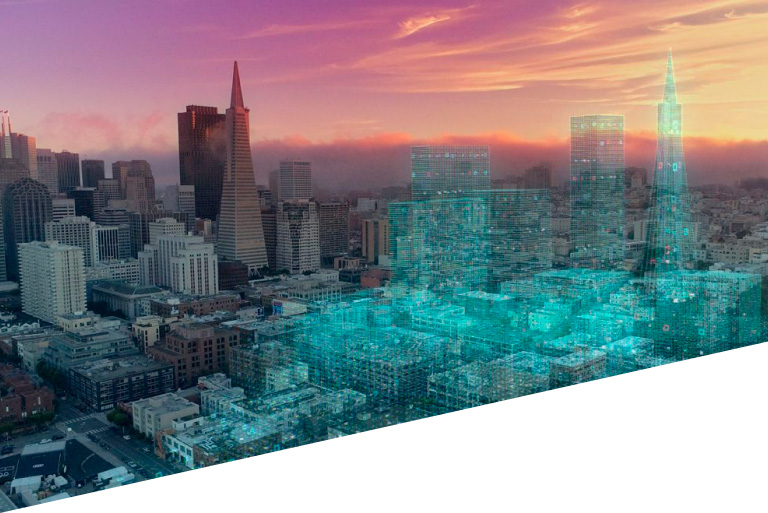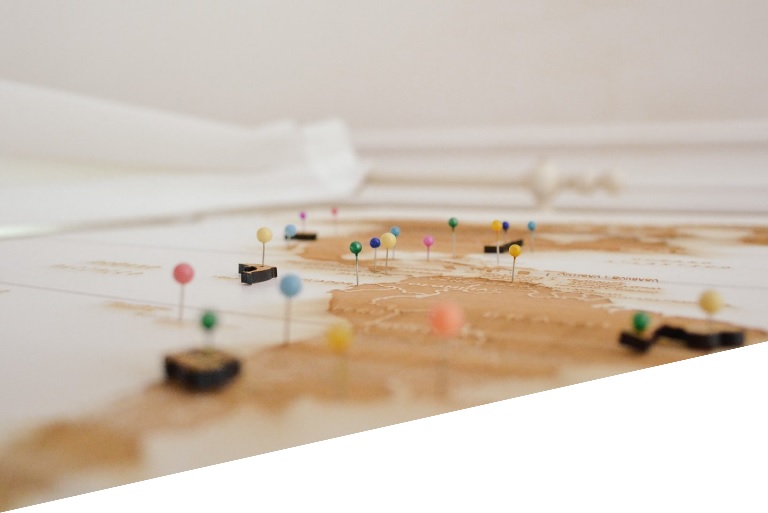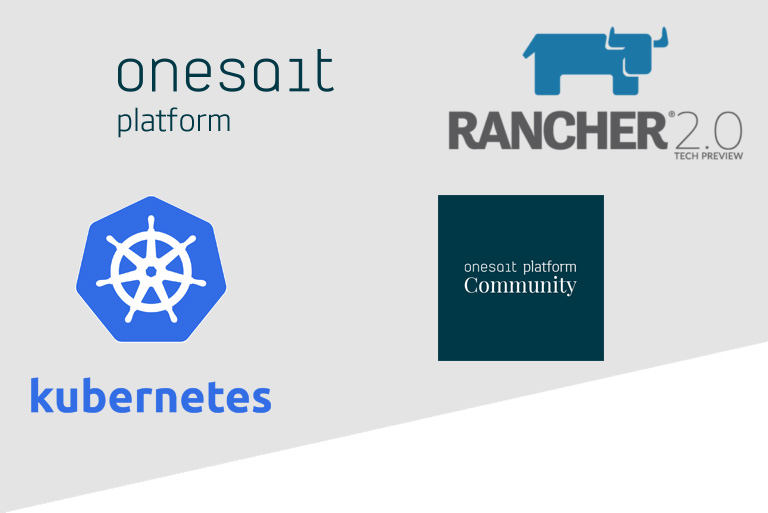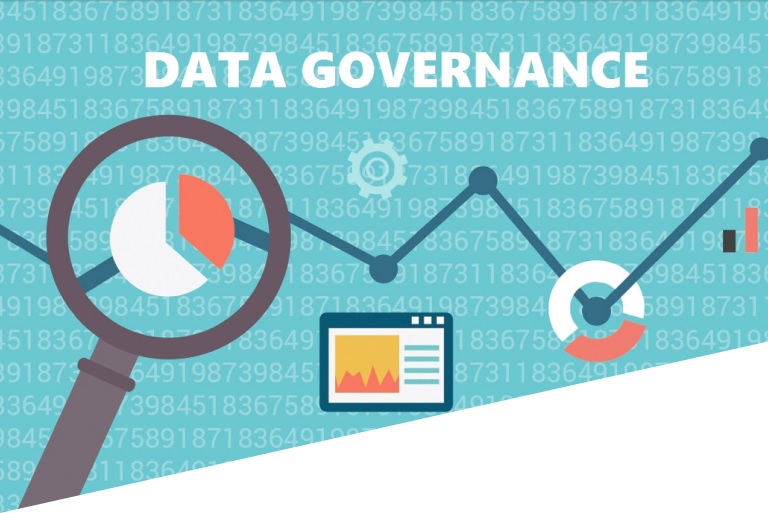Applicability and relevance of Digital Twins in the Smart Cities environment
The idea of the Digital Twin is not new. Already in 2002, there was talk of creating digital representations of physical systems that would have an entity by themselves.
Currently, in Industry 4.0, the Digital Twin concept is already part of the strategy of companies dedicated to product innovation and design.
Already in 2018, Digital Twin was for Gartner one of the top 10 technological trends of the year:

Digital Twin Concept
But what is a Digital Twin, exactly? In a nutshell, one can say that it is a digital representation of a real-world entity or system that does not act as a replacement for the physical object of the system it represents, but rather as a replica of it, allowing communication (testing, monitoring, command) of this physical device without having to be physically stuck to it.
From our point of view, we believe that the Digital Twin concept makes sense both within the IoT, where these “digital twins” are linked to objects in the real world and offer information about the status of the Thing, respond to changes, etc. , and outside of IoT, where there is great potential to link them to entities that are not simply “things”, so that in the future digital representations of all aspects of our world will be dynamically connected and using AI-based capabilities that will enable advanced simulation, operation and analysis.

A key issue, still to be resolved, in the field of Smart Cities: A well-functioning and sustainable smart city requires an orchestration of people, processes, city departments, public and private organizations, policies, and technologies, working all together across the entire smart city ecosystem.
And what if all these entities were represented as Digital Twins? What if the city platform allowed these Digital Twins to be orchestrated, regardless of how their physical representation works?
In our view, using the city platform to model and orchestrate Digital Twins has many advantages, including:
- It provides a high-level abstraction on the behavior of a real system: allowing to know its state (how it is currently working), how it interacts with its environment (events that it generates autonomously) and how it is affected by its environment (actions that the environment can prompt the system).
- It allows each solution to be treated homogeneously in a heterogeneous environment of vertical applications.
- It allows bringing together and giving meaning to the information (status, actions, events, etc.) of the different Digital Twins (vertical systems), through the joint analysis of the information they generate separately.
- Orchestrating different systems: having a real-time representation of the different verticals on a platform allows rules to be composed. These rules trigger actions in the different vertical systems affected by aggregating information from different sources.
- Simulate scenarios: it is not necessary to have the physical system underlying one or several Digital Twins, to check the general behavior under certain circumstances. If one or more systems are simulated while respecting the interface of the real physical system in your Digital Twin, you can check how it responds integrated with the rest of the city’s systems.
- Incremental implementation of vertical systems: the integration of verticals is a complex task both in the development phase and in the implementation. Through modeling with Digital Twins, the interface of each system is known by the other systems from the beginning, and there is no need to integrate systems in a P2P mode. Rather, each system is integrated with the platform, and the platform is the orchestrator.
Digital Twin and Onesait Platform
Having seen this, the question to be asked now is, how does the Onesait Platform support the concept of Digital Twin?
The Platform offers full support to the Digital Twins concept. This is to say:
- Modeling of a Digital Twin from the Platform’s ControlPanel: so that users can precisely define the interface (inputs, outputs and status) of their Digital Twin. The modeling allows the use of the semantics included in the platform (inputs, outputs and status can in turn be ontologies).
- Simulation of the Digital Twin: so that you can test the behavior of the Digital Twin, allowing you to use the AI modules in the Platform.
- Implementation of the Digital Twin: once the DT has been modeled, the platform can generate code in various languages to implement the functionality required for the use of the DT in operation.
- Digital Twin Status: Our Digital Twins are securely connected to the Platform, and the Platform has a Shadow of their status.
- Digital Twins Orchestration: Once modeled, implemented and running, the platform allows you to visually build a Digital Twins orchestration, so that the output of one Digital Twin can be mapped to the input of another, so that one reacts to state changes of the other.
Practical use in a Smart City
One of the real applications of what we have told is to use the capabilities of the Platform to build a complete city system, in which each vertical is modeled as a Digital Twin and the UI that aggregates all the information generated by the verticals is in turn a Digital Twin.
Specifically, we have generated an environment vertical with the capabilities of the Platform. This way, having a clear interface with inputs, outputs and status, in the future you could replace your Digital Twin with another from another company that complies with this interface, or even simulate a vertical with a Simulation Digital Twin.
When generating this Digital Twin of the vertical, the properties to be simulated are defined; in the case of the example, the following are generated as properties:
- Air quality
- Noise level
- Allergen level
- Weather information

Next, the Digital Twin is simulated by writing the logic in Javascript language from the Control Panel itself. This is useful for testing Digital Twin interfaces, or the integration of one of them with the other verticals:

Once this is done, an instance of the definition (modeling) of the Digital Twin is created, which, as I said before, can have different instances of a Digital Twin running depending on the use that you want to give it, either by simulation, or because you want to try a new vertical from another company, etc.
The Platform guides you in the instantiation of a Digital Twin, indicating the connection parameters (including Token) of the Digital Twin instance with the Platform:

Beyond everything already mentioned, the Platform allows for visually orchestrating the interaction between various Digital Twins.
To achieve this, the Digital Twins of the Platform will send all the events that they propagate to the Platform automatically, so that it is able to route the outputs of one Digital Twin to the inputs of another and establish rules between the Digital Twins.
Finally, once everything is orchestrated, you can see how the aggregation UI; in this case, we show the City Landscape Manager (CLM) Product:
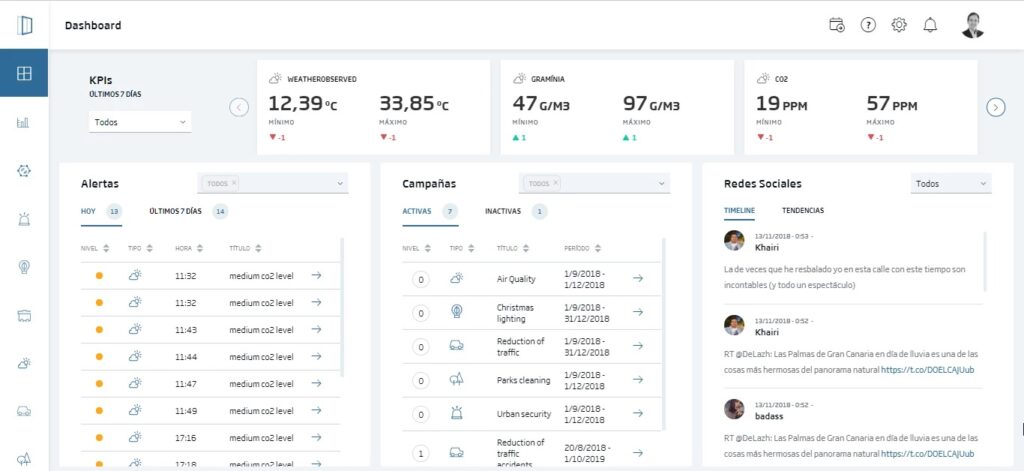
How this particular Digital Twin has been orchestrated is explained in greater detail in this article in our Confluence.

